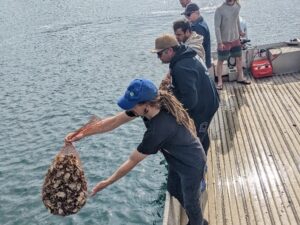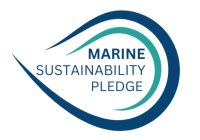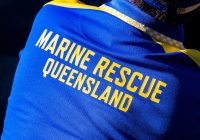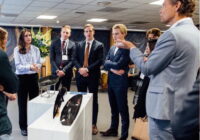In an NSW first, baby Native flat oysters have been reared and seeded onto a reef base to form a new emerging oyster reef at Wagonga Inlet Narooma.

Delviering the cultch (or seeded oyster shells) to a local Indigenous dive crew, who distributed them to the six reef bases at Wagonga inlet.
It’s all part of the Wagonga Inlet Living Shoreline project, a project that is transforming the inlet by restoring oyster reefs and fringing tidal vegetation.
Senior Fisheries Manager Kylie Russell said this technique of restoring oyster reefs using remotely reared oyster babies was required due to the rarity of Native flat oysters (Ostrea angasi) in the waters of the inlet.
“Native flat oysters were previously common throughout mid-southern NSW estuaries but are now extremely rare due to historical over harvesting, water quality and sediment changes, and likely also disease,” she said.
“So sadly, to bring back Native flat oysters, we couldn’t rely on baby oysters recruiting to reef base naturally,” Ms Russell said.
“Across Australia more than 90% of our oyster (or shellfish) reefs have been lost. This makes them one of our most critically endangered marine ecosystems not just in NSW, but across Australia and the rest of the world.”
Ms Russell said growing the Native flat oysters was a team effort with project partners The Nature Conservancy (TNC).
“We harvested the larvae from farmed adults and then reared them in a hatchery until they were ready to ‘stick’ to shell. They were then transferred to tanks on-site at Wagonga to grow further on oyster shell donated by local oyster farmers.”
“Our team of volunteers helped clean the shells for the oysters to seed on. The technical work of collecting the larvae, rearing them in the hatchery and settling them in the onsite tanks was done by DPI Fisheries, professional aquaculturists and the TNC team.”
“The Nature Conservancy and the Joonga Dive Team, a local Indigenous dive crew, transferred the cultch (or seeded oyster shells) to the six reef bases at Wagonga inlet.”
Ms Russell said she was looking forward to seeing the oyster reef grow over the coming years.
“Last year we started the Sydney rock oyster reef in the shallower waters of Wagonga Inlet, which is now growing well. This year it is the Native flat oyster reefs we are restoring, in the deeper waters of the inlet,” she said.
“In coming months, we will be working with the Joonga Divers to undertake monitoring to determine the survival and growth rates of the Native flat oysters.”
“It’s exciting that all 2 million spat (baby oysters) are now safely in their final home and hopefully on their way to restoring these rare oysters to Wagonga Inlet.”
“Oyster reefs play a vital role in providing habitat for fish, filtering water and protecting our coast from erosion. It’s great to be part of the team bringing this rare important ecosystem back to our waterways.”
The project is part of the Wagonga Inlet Living Shoreline (WILS) project, a collaborative and integrated multi-habitat project involving DPI Fisheries via the Marine Estate Management Strategy, The Nature Conservancy (TNC) through the Commonwealths Reef Builder fund and Eurobodalla Shire Council.
WILS uses nature for foreshore protection, reinstating rare habitats, enhancing biodiversity and fisheries productivity, and providing engagement and access improvements for the NSW community.
For more information visit www.marine.nsw.gov.au
To keep up to date with all marine industry news visit www.marinebusinessnews.com.au









